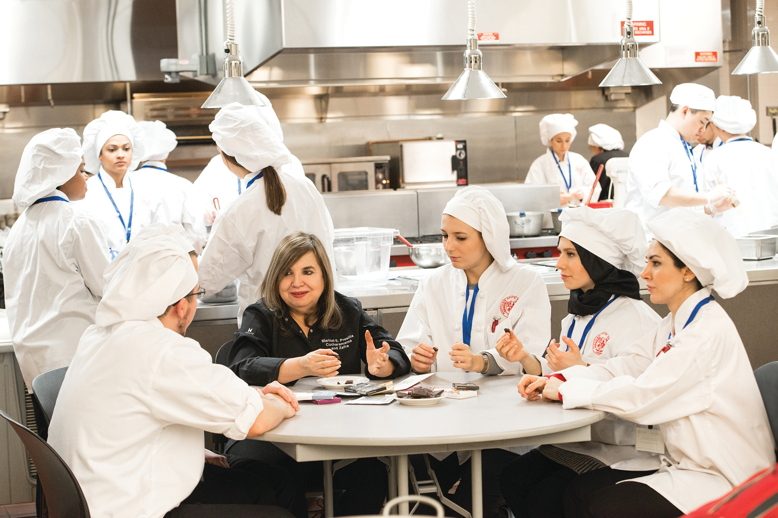
“Chocolate,” says Maricel Presilla, one of the world’s leading experts on the subject, “should not be munched and swallowed without thinking.”
While thinking is encouraged and swallowing is a certainty, munching is considered clueless self-denial, like gulping down a glass of Château d’Yquem as if it were cough medicine.
This spring, Presilla has been training food-systems students at Montclair State University in the art of tasting chocolate. Some will put their new knowledge to use as judges when the International Chocolate Awards, which Presilla cofounded in 2011, come to MSU May 14 through 19.
“The way to approach chocolate, and not just for judging, is first to look at the color,” says Presilla, the James Beard Award-winning chef of Cucharamama and Zafra restaurants in Hoboken and author of the pioneering The New Taste of Chocolate: A Cultural and Natural History of Cacao With Recipes.
“If a dark chocolate is almost black, the beans are probably overroasted,” she explains. “If you smell it, if there’s anything offensive, like mold, you will detect it. Let the chocolate melt on your tongue. Exhale through your mouth; the volatile compounds send signals to your brain. You’ll begin to feel what it’s all about.”
While Presilla teaches managed subjectivity—the rigorous scoring system she and her co-founders devised after conferring with chocolate experts around the world before the first competition in 2012—Professor Charles Feldman, head of MSU’s food-systems program, is using his advanced lab to translate subjective impressions into data.
“We will break down aromas into a statistical analysis of the volatiles that actually give off the fragrances,” he says. Using a program that analyzes details of facial expression as a person inhales chocolate vapors, “we will also see if there’s a variance between the scores they give and what we can record scientifically. People can’t always articulate what they are experiencing. Some of this is subliminal.”
The computer data will not be used to judge this year’s estimated 500 entries competing for gold, silver and bronze medals in nearly 50 categories ranging from dark, milk and white chocolate bars to bonbons, truffles, pralines and spreads. But some of the judges may volunteer to inhale vapors at Feldman’s olfactometer to see what they can learn from it.
Back in 2011, Presilla, with Martin Christy, the esteemed British chocolate educator and consultant, and a few compatriots, set out to create the first competition to identify the best chocolates in the entire world.
“There was nothing of that scope,” she says. They set up a kind of cacao World Cup, with many regional competitions culminating in an annual Grand Final. “Every year, the quality has gone up, making the judging more difficult,” she says. “The awards have spurred huge interest in creating great chocolate.”
This is the first year the competition for the Americas and Asian-Pacific nations, previously held in New York City, will be held in New Jersey. (“That was very important to me,” Presilla says. “And it is the first time we are partnering with a university.”) The winners will head to London for the Grand Final in October.
Though the MSU event doesn’t lend itself to an audience, people with strong credentials in judging chocolate, wine, coffee and food are invited to apply to be judges at this website. “Late April, early May is not too late,” Presilla says.
Chocolate, coffee and wine all require fermentation—to remove pulp from coffee and cacao beans and begin flavor development, and to turn the sugar in grape juice into alcohol.
Each one exhibits terroir, the taste of place. “Cacao from one part of the Ecuadorian Amazon has a floral component,” Presilla explains. “Cacao from Nicaragua will have notes of walnut and like a peppery Tuscan olive oil.”
Feldman served as a judge in the 2015 Grand Final. “There are so many deep dimensions to chocolate that I didn’t realize,” he says. “Maybe only wine has that many dimensions.”



